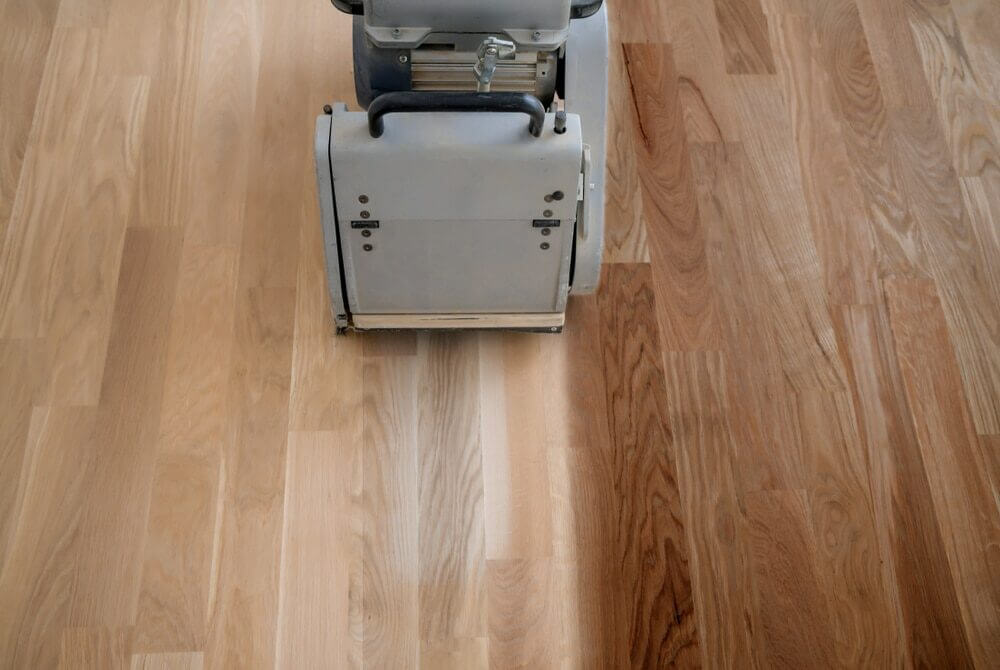London:
Nationwide:
The Impact of Buffing on Floor Durability
Posted on January 1, 2024
Buffing
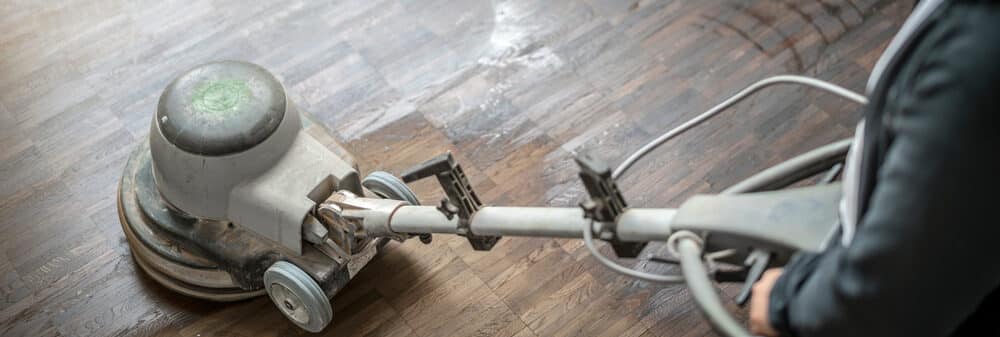
Maximising Floor Longevity: The Essential Role of Buffing in Floor Durability
Welcome to our comprehensive exploration of the world of wood floor maintenance, specifically focusing on the impact of buffing on floor durability. Floors, being the foundation of any space, endure constant use and often go unnoticed in our daily lives. However, the longevity and appearance of these surfaces are paramount, not only for aesthetic appeal but also for safety and functionality. This blog post delves into the intricate process of floor buffing, a key element in floor care that significantly contributes to preserving and enhancing the durability of various floor types.
In this introduction, we’ll briefly overview the importance of floor maintenance and set the stage for understanding why floor durability is a critical concern for homeowners, businesses, and facility managers alike. We’ll explore how regular maintenance, including buffing, plays a vital role in extending the life of flooring materials, preventing wear and tear, and maintaining a pristine appearance. Whether you’re a professional in the cleaning industry, a business owner, or simply someone interested in home maintenance, this post will provide valuable insights into the benefits and techniques of floor buffing.
Join us as we embark on this informative journey to uncover the secrets behind maintaining durable, beautiful floors through the art of buffing.
Understanding floor buffing
In the realm of floor maintenance, buffing stands out as a critical technique for preserving and enhancing the appearance and longevity of floors. This section aims to demystify the process of floor buffing, explain its basic principles, and introduce the various techniques employed. By understanding the fundamentals of floor buffing, one can appreciate its role in maintaining durable, attractive flooring.

What is floor buffing?
Floor buffing is a cleaning and polishing process that involves the use of a buffing machine, which is equipped with pads or brushes, to smooth and shine floor surfaces. This process removes scratches and marks, evens out the floor’s surface, and leaves a glossy finish that not only looks appealing but also protects the floor.
The Basic Principles of Buffing:
- Cleaning: Buffing begins with cleaning the floor to remove dirt, debris, and any existing finish that might hinder the buffing process.
- Smoothing: The buffing machine then smooths out imperfections, such as minor scratches and scuffs, enhancing the floor’s texture.
- Polishing: Finally, the floor is polished to a shine, which not only improves its appearance but also forms a protective layer that can help prevent future damage.
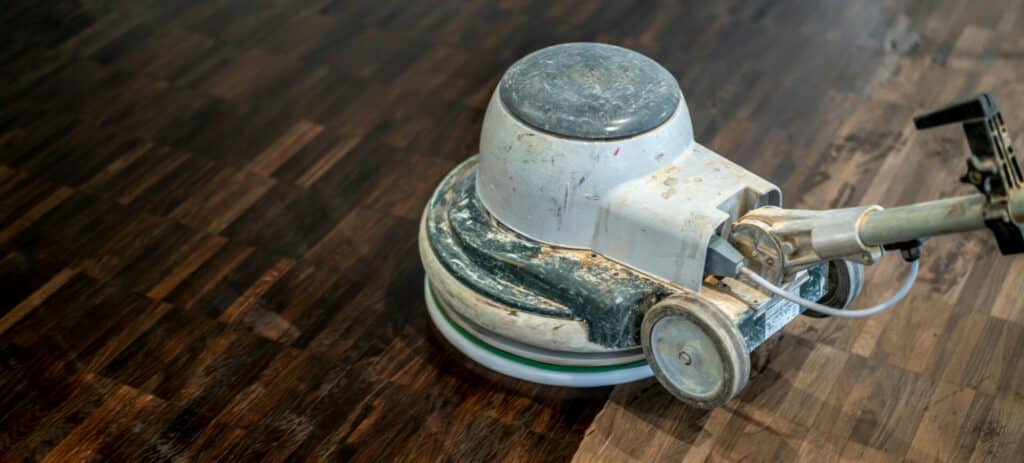
Types of Buffing Techniques
Dry Buffing:
This technique involves using a dry pad on the buffing machine and is typically used for routine maintenance. It’s ideal for quick touch-ups and can instantly restore the floor’s shine.
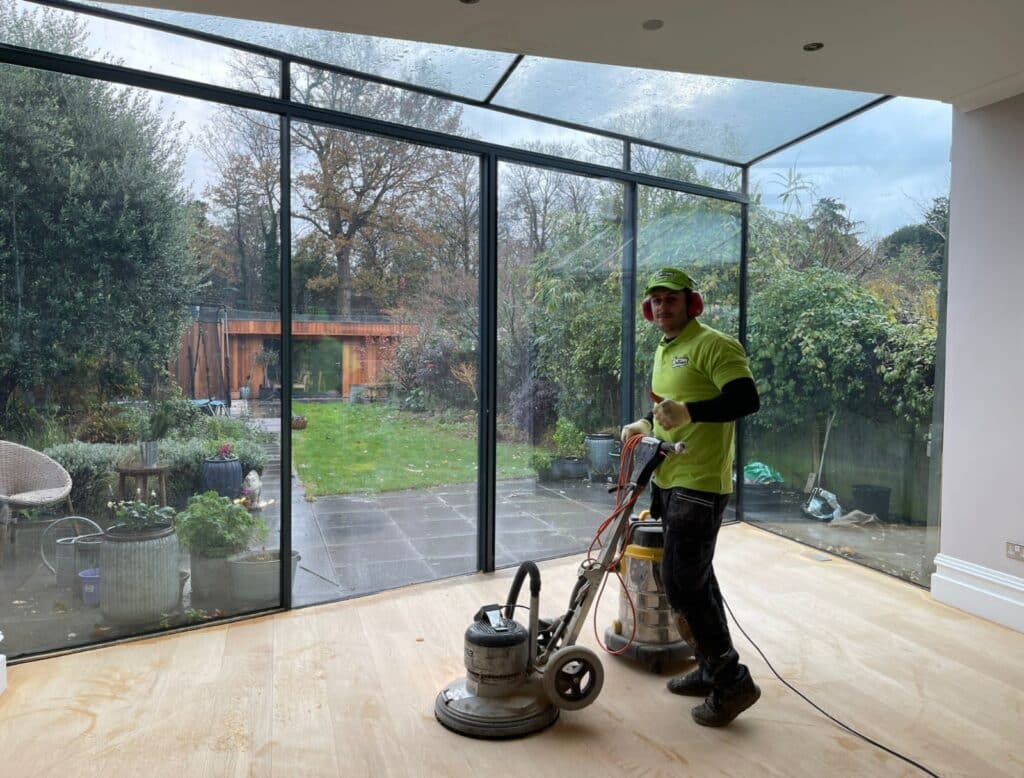
Spray Buffing:
Spray buffing combines a cleaning solution (spray) and the buffing process. The solution is sprayed onto the floor or the buffing pad, aiding in removing soil and restoring the floor’s shine more effectively than dry buffing.
Burnishing:
Burnishing is a high-speed form of buffing. It uses a high-speed floor machine to achieve a very high-gloss finish. This method is more aggressive than standard buffing and is ideal for floors that require a high level of shine, like those in commercial or retail spaces.
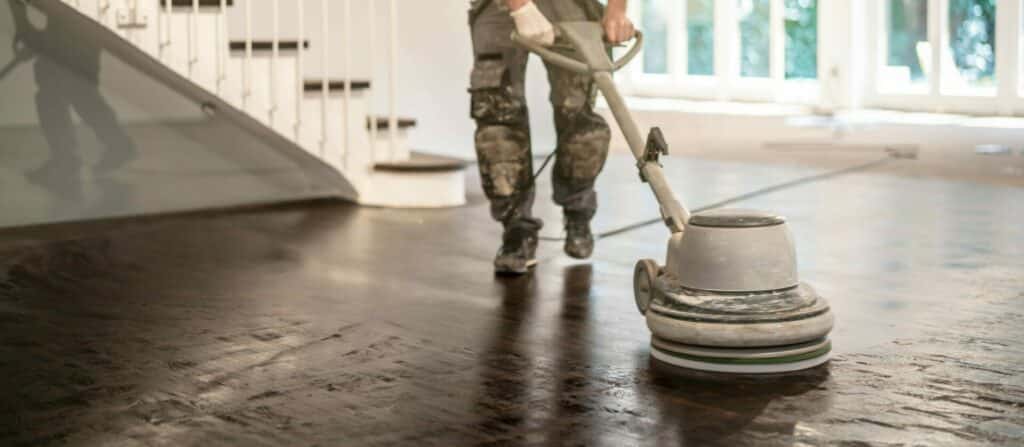
Choosing the Right Buffing Technique:
The choice of wood floor buffing technique largely depends on the floor type, the desired level of shine, and the amount of foot traffic the floor receives. For example, delicate floor types might require a gentler buffing approach, while high-traffic areas might benefit from a more robust technique like burnishing.
The Role of Buffing in Floor Durability
Floor buffing is not just about making floors look shiny and new; it also plays a significant role in enhancing the durability and lifespan of flooring materials. In this section, we will explore how buffing affects different types of floors and the long-term benefits it offers for maintaining floor durability.
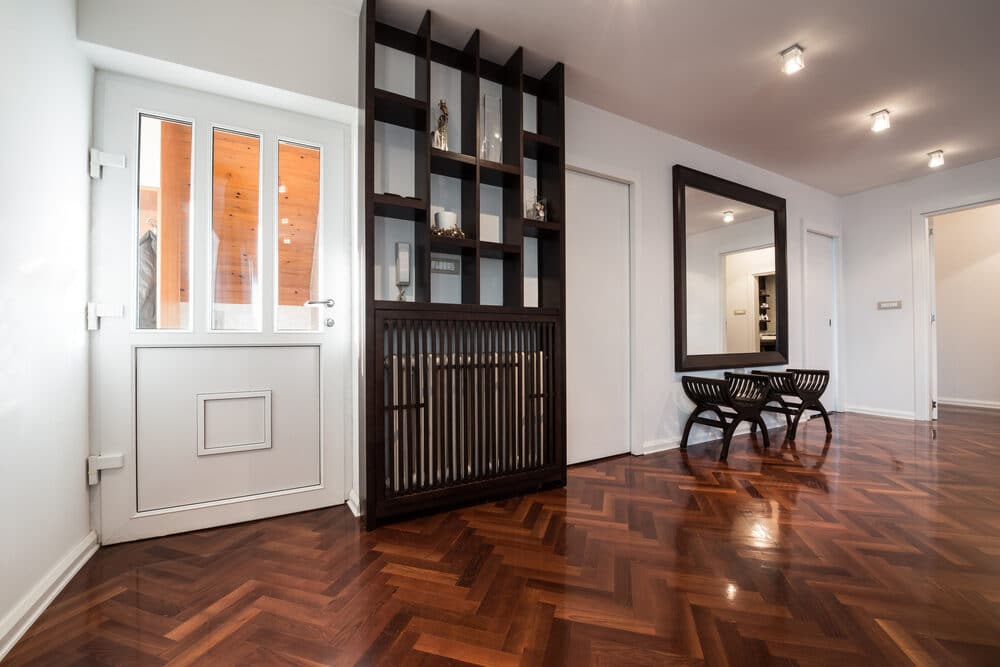
Impact on Different Floor Materials
Tile and stone floors:
For tile and stone, buffing removes grime and restores luster. It also helps in sealing grout lines against dirt and spills, thus prolonging the life of these floors.
Vinyl and Linoleum Floors:
These synthetic floors benefit greatly from buffing. It not only brings back their shine but also smooths their surface, making them more resistant to wear and tear and easier to clean.
Concrete Floors:
Buffing concrete floors can significantly reduce the buildup of dirt and make them more resilient to heavy foot traffic and industrial wear.
Hardwood Floors:
Buffing can rejuvenate hardwood floors by removing surface scratches and restoring their natural shine. Regular buffing helps form a protective layer that wards off deeper scratches and damage.
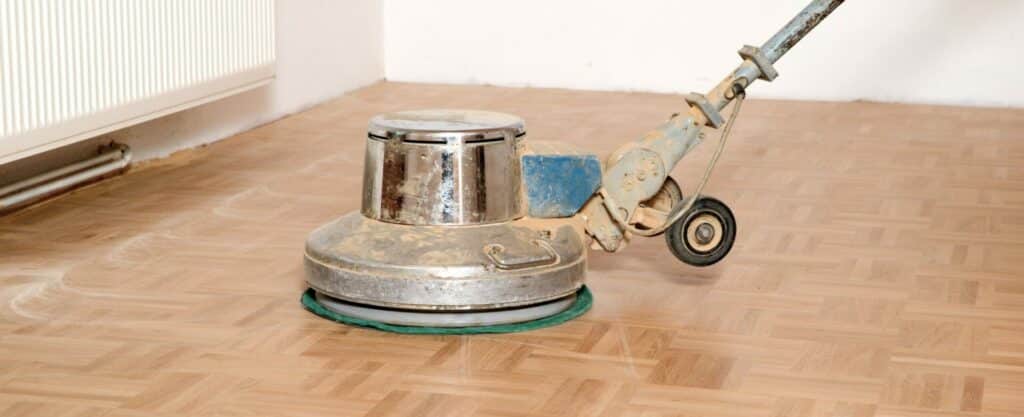
Long-Term Benefits of Regular Buffing
- Enhanced Durability:
Regular buffing reduces the rate of wear and tear on floor surfaces. By removing minor scratches and scuffs, it prevents them from developing into deeper, more damaging marks. - Protection Against Damage:
The buffing process often includes the application of protective finishes that shield the floor from spills, stains, and scratches, further extending its lifespan. - Improved Safety:
Smooth, well-maintained floors are safer to walk on. Buffing eliminates rough spots and unevenness that could cause trips and falls. - Cost-Effectiveness:
By prolonging the life of flooring, regular buffing reduces the need for frequent repairs or replacements, offering long-term cost savings. - Aesthetic Preservation:
Buffed floors maintain their aesthetic appeal over time, contributing to a clean and professional look in any space. - Environmental Impact:
Maintaining existing floors through buffing is more environmentally friendly than replacing them, as it reduces waste and the demand for new materials.
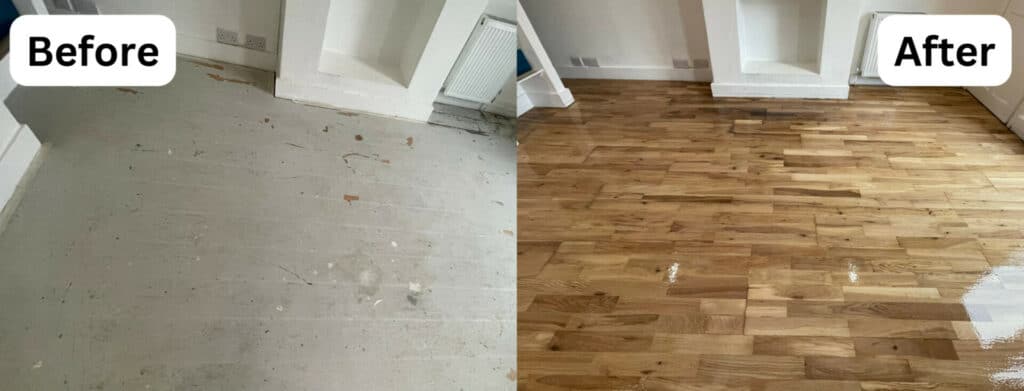
Comparative Analysis: Buffing vs. Other Floor Maintenance Techniques
Understanding the efficacy of floor buffing in relation to other maintenance techniques is crucial for making informed decisions about floor care. This section presents a comparative analysis between buffing and various other floor maintenance strategies, highlighting their unique benefits and limitations.
Buffing vs. waxing
Buffing:
- Primarily enhances the existing finish of the floor.
- Offers a quick method to restore shine and smoothness.
- It requires regular maintenance but is less labour-intensive in the short term.
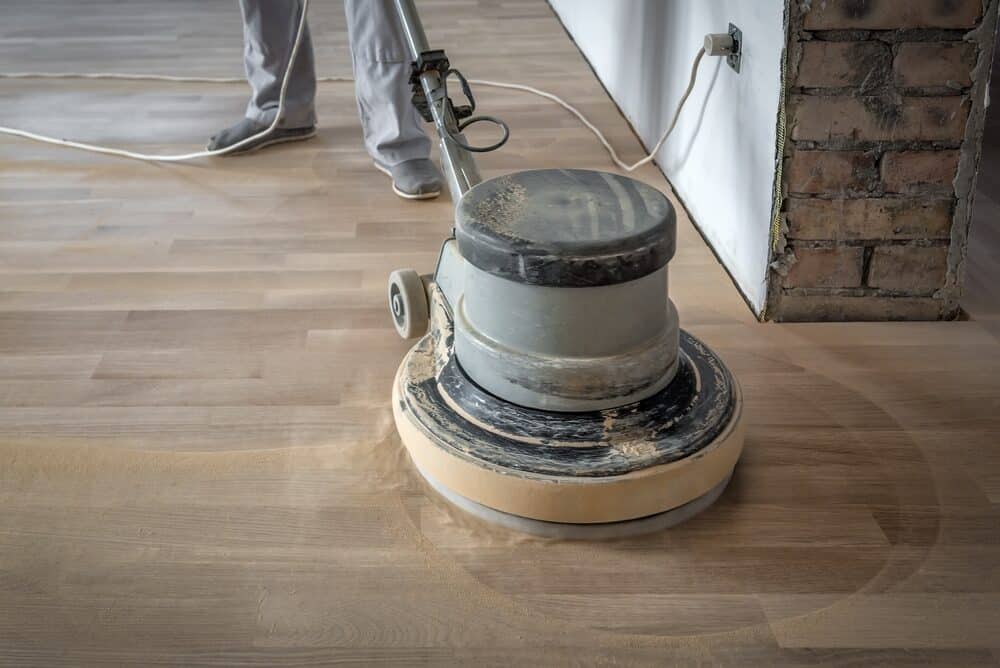
Waxing:
- Involves applying a new protective coating to the floor.
- It provides a deeper level of protection and can fill in larger scratches and imperfections.
- Generally, it lasts longer than buffing but requires more effort and time during application.
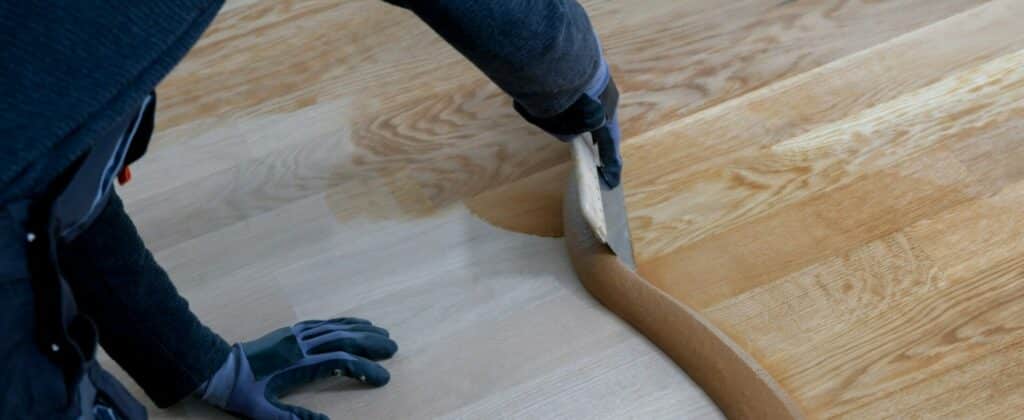
Buffing vs. Refinishing (Hardwood Floors)
Buffing:
- Suitable for superficial scratches and dullness.
- There is no need to strip away the existing finish.
- Quick and cost-effective, ideal for regular maintenance.
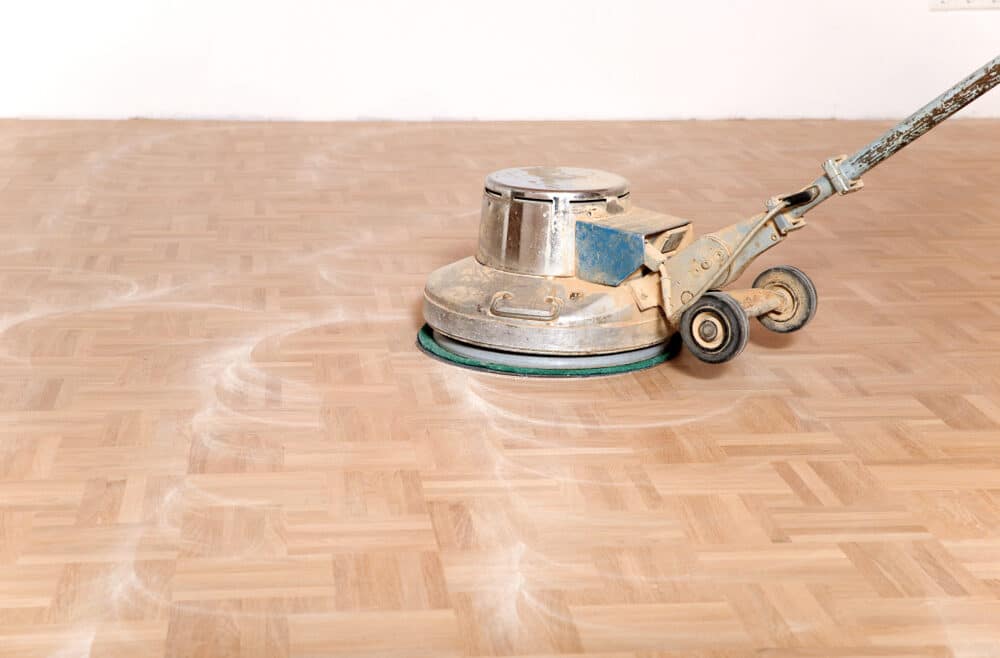
Refinishing:
- It involves sanding down the floor to bare wood and applying a new finish.
- Best for floors with deep scratches, stains, or damage.
- More time-consuming and expensive, but offers a complete restoration.
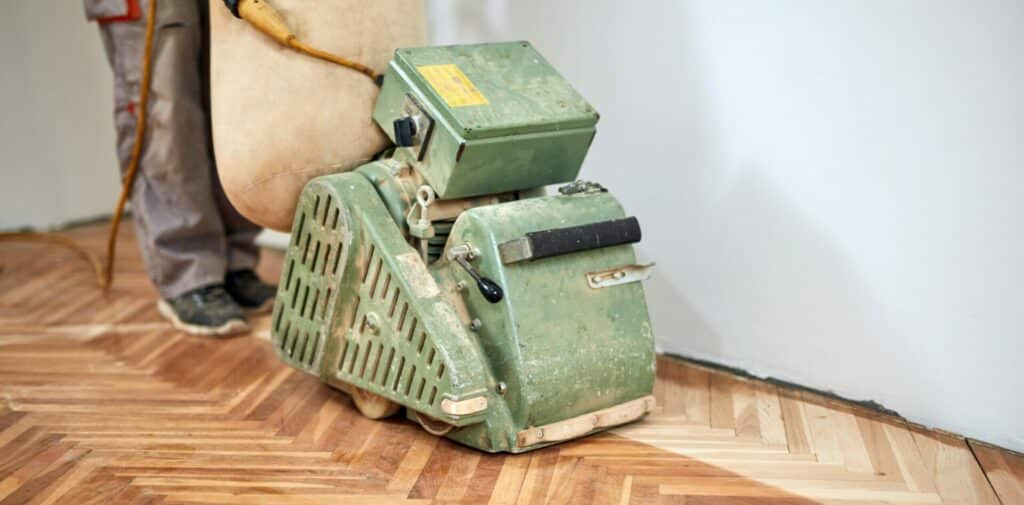
Buffing vs. deep cleaning
Buffing:
- It focuses on the top surface of the floor, enhancing its appearance.
- It does not deeply cleanse the floor but can remove light soiling in the process.
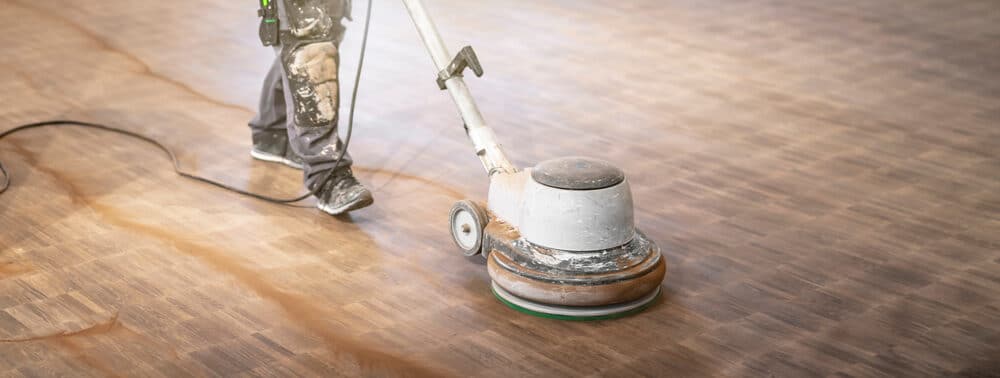
Deep Cleaning:
- Involves thorough cleaning of the floor using specialised cleaning agents.
- It removes deep-seated dirt and grime but doesn’t address scratches or shine.
- It is often a prerequisite to buffing to ensure the best results.
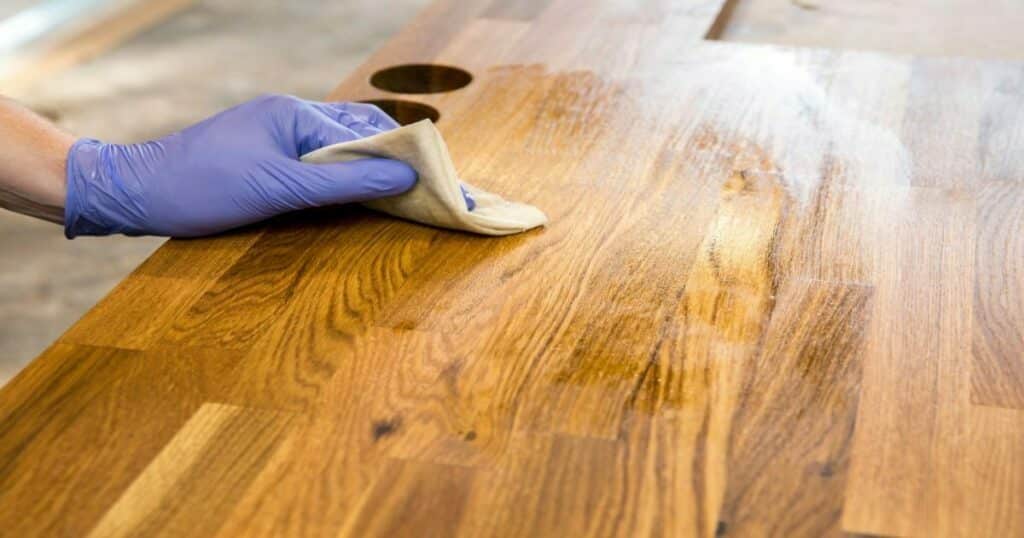
Best Practices in Floor Buffing
Achieving optimal results from floor buffing requires adhering to certain best practices. Whether you’re a professional cleaner or a DIY enthusiast, understanding these practices is essential for effective and safe buffing. This section outlines the key strategies to ensure your floor buffing efforts are successful and contribute to the long-term durability and appearance of your floors.
Choosing the Right Equipment and Materials
- Selecting the Right Buffing Machine:
- Consider the type of floor you are working with. Different flooring materials may require different buffing speeds or pad types.
- For large, open areas, a high-speed buffer is effective, while a low-speed buffer is better for smaller or congested spaces.
- Choosing Buffing Pads:
- Use pads appropriate for your floor type. Harder pads are generally used for deeper cleaning, while softer pads are for polishing and light cleaning.
- Replace pads regularly to maintain effectiveness and prevent damage to floors.
- Selecting Buffing Solutions:
- Use a buffing solution compatible with your floor type. Ensure it is designed for the specific finish of your floor to avoid damage.
- Follow the manufacturer’s instructions for dilution and application.
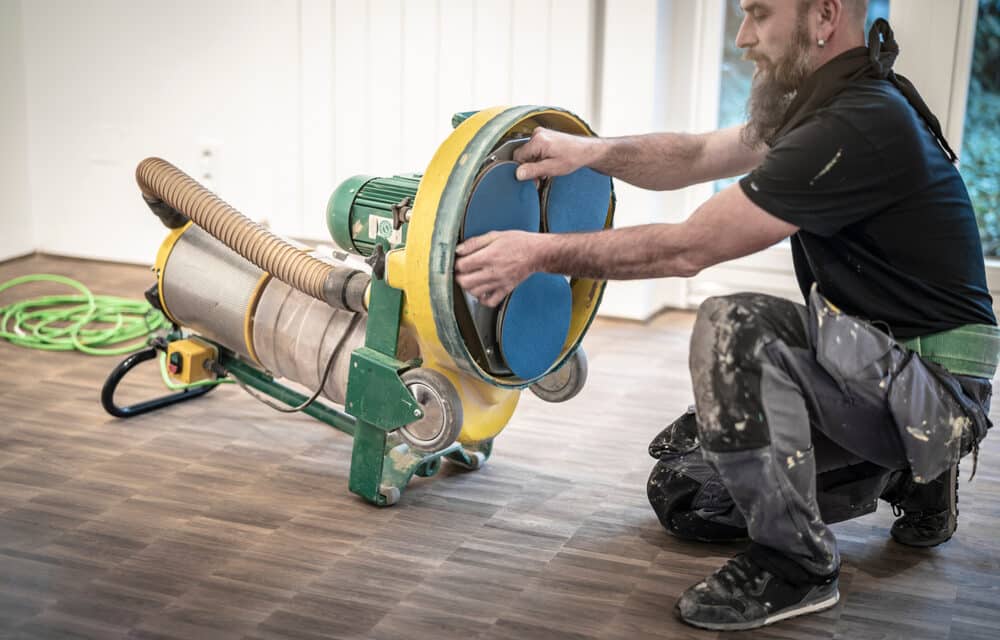
Tips for Effective Buffing
- Preparation:
- Thoroughly clean the floor before buffing. Remove dust, debris, and any sticky residues.
- Ensure the floor is dry to avoid slipping hazards and uneven buffing results.
- Buffing Technique:
- Move the buffer in a smooth, controlled motion. Overlapping strokes ensure an even finish.
- Start from one end of the room and gradually move to the other, maintaining a steady pace.
- Safety Measures:
- Wear appropriate safety gear, like non-slip shoes, gloves, and eye protection.
- Ensure the area is well-ventilated, especially when using chemical buffing solutions.
- Post-Buffing Care:
- After buffing, remove any dust or residue left behind.
- Allow the floor to dry completely before allowing foot traffic.
- Regular Maintenance:
- Incorporate buffing into your regular floor maintenance schedule. Frequency depends on the traffic and use of the area.
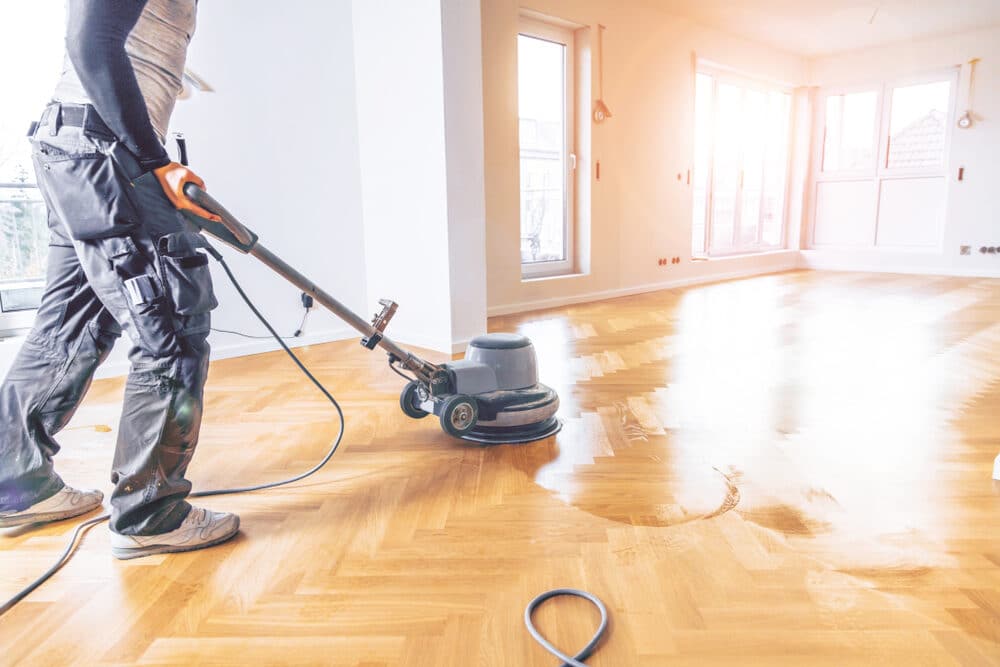
Common Mistakes to Avoid
- Using the incorrect pads:
- Avoid using pads that are too abrasive for your floor type, as they can cause scratches and damage.
- Over-Buffing:
- Over-buffing can wear down the floor prematurely. Only buff as much as necessary to achieve the desired shine.
- Neglecting safety precautions:
- Don’t overlook the importance of safety gear and proper ventilation.
Challenges and Considerations in Floor Buffing
Floor buffing, while effective, comes with its own set of challenges and considerations. Addressing these concerns is crucial for ensuring the process is as efficient and beneficial as possible. This section highlights common obstacles and important factors to consider when undertaking floor buffing.
Common Challenges in Floor Buffing
- Dealing with Different Floor Materials:
- Each flooring type, from hardwood to vinyl, has its own requirements for buffing. Using the wrong technique or equipment can lead to damage.
- Solution: Research and understand the specific needs of your floor type before beginning the buffing process.
- Managing High-Traffic Areas:
- Floors in high-traffic areas wear down faster and require more frequent maintenance.
- Solution: Implement a regular buffing schedule and consider more durable finishes for these areas.
- Balancing Shine and Safety:
- Over-buffing can lead to floors becoming too slick, posing a safety hazard, especially in public spaces.
- Solution: Use appropriate buffing pads and solutions to achieve a balance between shine and non-slip safety.
- Environmental and Health Considerations:
- Some buffing solutions contain chemicals that can be harmful to the environment and human health.
- Solution: Opt for eco-friendly and low-VOC (volatile organic compounds) products.
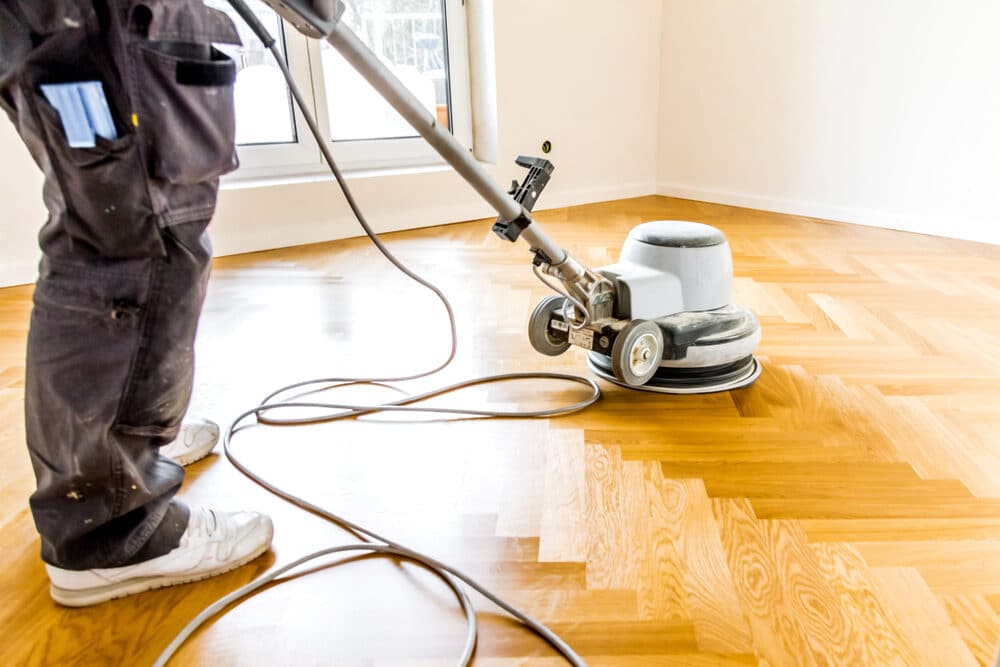
Addressing wear and tear
- Regular Inspections:
- Regularly inspect floors for signs of wear and tear, such as scratches, discoloration, and a loss of shine.
- Early detection allows for timely buffing, preventing further damage.
- Appropriate Response to Damage:
- Not all damage can be fixed with buffing. Deep scratches or gouges may require more intensive treatments, like refinishing or replacing sections of the flooring.
- Assess the extent of the damage and choose the most suitable maintenance method.
- Educating Users:
- In commercial or public spaces, the behaviour of the users can impact floor durability.
- Implement policies or guidelines for activities that could damage the floor, such as wearing appropriate footwear or avoiding dragging heavy objects.
Long-Term Floor Care Strategy
- Integrated Maintenance Plan:
- Buffing should be part of a comprehensive floor maintenance plan that includes regular cleaning, occasional deep cleaning, and timely repairs.
- Budgeting for Maintenance:
- Allocate a realistic budget for ongoing floor maintenance, including buffing, to ensure floors are kept in optimal condition.
Advanced Techniques in Floor Buffing
To achieve professional-level results in floor buffing, it’s essential to go beyond the basics and explore advanced techniques. These methods can significantly enhance the effectiveness of buffing, especially in challenging environments or with floors that require special attention. This section covers innovative approaches and expert tips for achieving the best results in floor buffing.
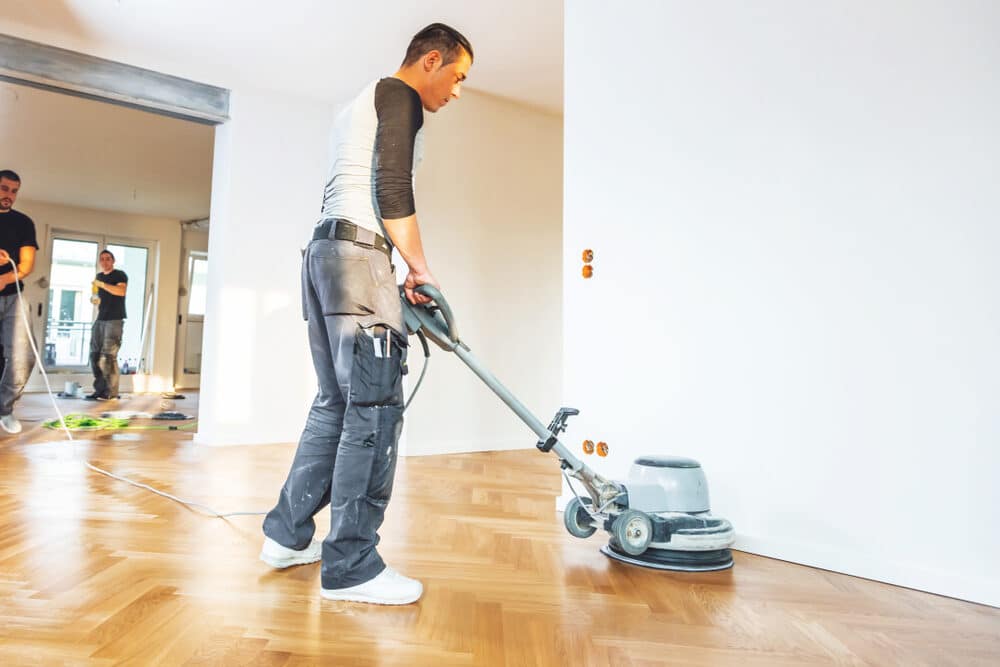
Innovations in Buffing Technology
- Diamond Pad Technology:
- These pads use microscopic diamonds to effectively polish floors without the need for chemical polishes.
- Ideal for hard surfaces like concrete and terrazzo, they provide a superior shine and a long-lasting finish.
- Orbital Buffing Machines:
- Unlike traditional rotary buffers, orbital machines move in a random orbit pattern, reducing the risk of leaving swirl marks on the floor.
- This technology is especially useful for delicate surfaces that are prone to damage from standard buffers.
- Automated Buffing Machines:
- Robotic buffing machines are emerging in the market, offering a consistent and efficient buffing process, especially in large commercial spaces.
- These machines can be programmed for specific floor types and areas, ensuring optimal buffing with minimal human intervention.
Expert Tips for Professional Results
- Layered Buffing Approach:
- Start with a coarser pad to address deep scratches, and gradually move to finer pads for polishing. This step-by-step approach ensures a thorough and even finish.
- Customised Buffing Solutions:
- Mix and match different types of buffing solutions and pads based on the specific needs of the floor. For instance, some floors might benefit from a combination of spray buffing and dry buffing.
- Heat Buffing Technique:
- It involves using a high-speed buffer that generates heat, helping the floor finish to meld and create a more durable and glossy surface.
- This technique is particularly effective for floors that require a high-gloss finish, like in showrooms or luxury retail spaces.
- Intermittent deep cleaning:
- Integrate deep cleaning sessions between regular buffing cycles. This helps in removing any buildup that buffing alone cannot address.
- Use of Eco-Friendly Products:
- Opt for environmentally friendly buffing solutions and pads. This not only protects the environment but also ensures better indoor air quality.
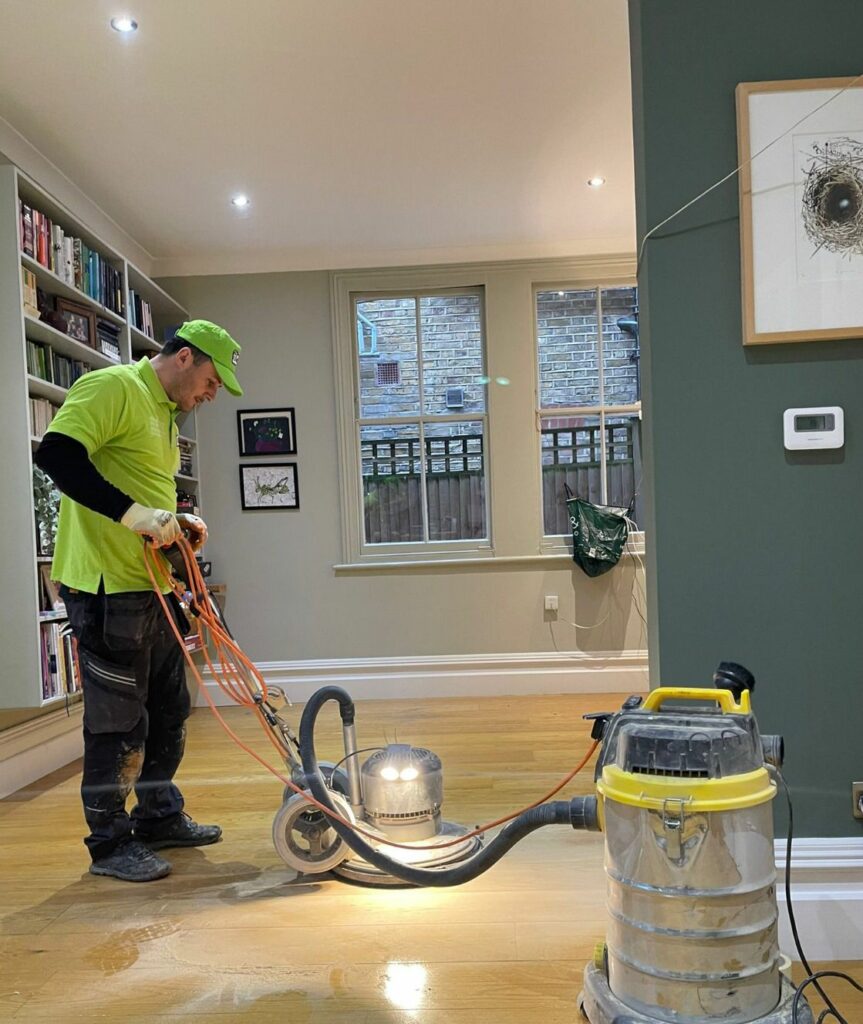
Advanced training and knowledge
- Consider professional training or workshops to stay updated with the latest techniques and products in floor care and buffing.
- Understanding the chemistry of floor finishes and cleaning solutions can also significantly improve the buffing process.
Conclusion
As we conclude our comprehensive exploration of “The Impact of Buffing on Floor Durability,” it’s clear that floor buffing is a pivotal aspect of floor maintenance. This process goes beyond just enhancing the aesthetic appeal of floors; it plays a crucial role in extending their lifespan, preserving their integrity, and ensuring their safety and functionality.
Through this blog post, we have delved into various facets of floor buffing, from understanding its basic principles to exploring advanced techniques and best practices. We’ve seen how buffing affects different floor materials, the comparative advantages over other maintenance methods, and the importance of tailoring buffing practices to specific floor types and traffic conditions. The challenges and considerations highlighted emphasise the need for careful planning and execution in the buffing process.
The long-term benefits of regular wood floor buffing—enhanced durability, cost-effectiveness, improved safety, and aesthetic preservation—cannot be overstated. Buffing is not just a maintenance task; it’s an investment in the longevity and beauty of flooring. Whether in a residential home, a commercial space, or a public facility, properly maintained floors speak volumes about the care and attention given to the property.
Looking ahead, the future of floor maintenance seems promising with advancements in buffing technology and a growing emphasis on eco-friendly practices. Staying informed and adapting to these changes will be key to achieving the best results in floor care.
In conclusion, the role of buffing in maintaining and enhancing floor durability is indispensable. With the right approach, tools, and knowledge, anyone can master the art of floor buffing, ensuring their floors remain in pristine condition for years to come. We hope this blog post has provided valuable insights and encouraged a more informed and effective approach to floor maintenance.

Sanding
We provide virtually dust-free sanding with our continuous belt machinery with mobile extraction units, giving you a safer environment for your family.
Oiling
This organic finish not only adds beauty to your home but also has exceptional water-repellent characteristics, making it easier to clean and maintain.
Waxing
This natural floor finish offers the softest and most mellow appearance – and leaves your floor able to breath.
Buffing
Using soft buffing machines (and hand-polishing where required) will bring a wonderful sheen to your newly-finished floor.
Repairs
We offer a full assessment of your wooden floors to determine what repairs are needed to provide the perfect working surface for the later stages of sanding, staining and sealing.
Restoration
We offer a comprehensive restoration process designed to address floors that are improperly fitted or damaged over time through wear and tear.
Request a fixed price quote for your wood floor restoration now
Simply enter your postcode below to get started.
Services
Wood Floor Sanding Wood Floor Restoration Wood Floor Scratch Repair Squeaky Wood Floor Repair Parquet Floor Sanding Parquet Floor Restoration Commercial Floor Sanding Church Floor Sanding Community Centre Floor Sanding School Floor Sanding Gap Filling Gap Filling with ResinCopyright © Mr Sander®
Privacy & Cookies Terms & Conditions Complaints Procedure Cancellation Rights Sitemap

